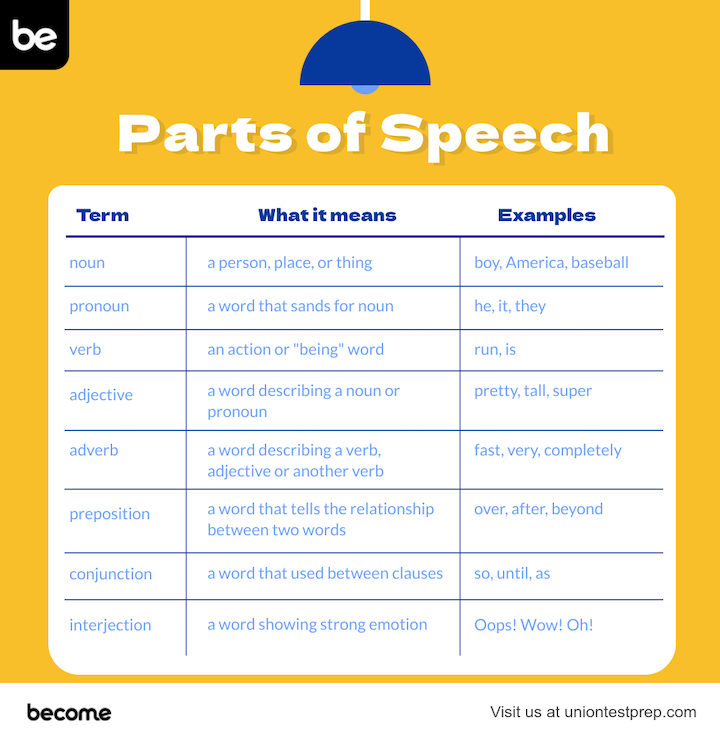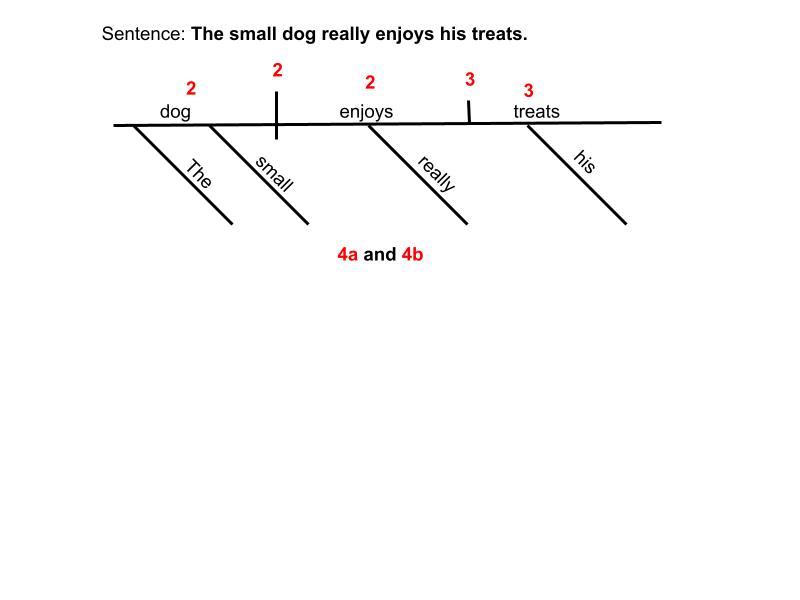English and Language Usage Study Guide for the TEAS
Page 3
Conventions of Standard English: Sentence Structure
Sentence structure involves methods for effectively putting a sentence together. Questions may include the use of passive and active voices, proper tenses, and different points of view in writing. To prepare for this part of the test, review the different types of verb tenses (such as past, past perfect, present, and present perfect), rewriting a sentence that is in the passive voice in the active voice, and the three different viewpoints in writing (first-, second-, and third-person).
Clauses
Clauses are groups of related words that contain a subject and a verb. If the clause also expresses a complete thought, it is known as an independent clause and can stand on its own as a complete sentence. If there is no complete thought expressed by the group of words, it is a dependent clause and must be attached to an independent clause to form a complete sentence.
Examples of independent clauses:
Ron fished off the pier.
The cat stalked the mouse.
Visiting the dentist can be scary.
Examples of dependent clauses:
because she wasn’t sure
before she said no
how they knew
Phrases
Phrases are groups of two or more related words that act as a cohesive grammatical unit. They are often found within clauses but do not contain both a subject and a verb. Here are some examples of phrases:
over winter break
the yappy dog
reading a magazine
Parts of Speech
On the TEAS 7 English and Language Usage test, simple questions may involve finding nouns and verbs; more advanced questions may involve more complicated rules about word use and sentence structure. Knowing the nature and role of the parts of speech will help you answer all of them correctly.
All of the words in the English language can be divided into eight categories or parts of speech. Since any grammar class may be in your distant past, let’s cut to the chase here, and get a handle on these terms:
| Term | What it means | Examples |
| noun | a person, place, or thing | boy, America, baseball |
| pronoun | a word that stands for a noun | he, it, they |
| verb | an action or “being” word | run, is, feel |
| adjective | a word describing a noun or pronoun | pretty, tall, super |
| adverb | a word describing a verb, adjective, or another adverb | fast, very, completely |
| preposition | a word that tells the relationship between two words | over, after, beyond |
| conjunction | a word that connects clauses in a sentence or coordinates words within a clause | if, and, but |
| interjection | an exclamation | Oh!, Wow!, Ah! |

Other Sentence Parts
To be considered “complete,” a sentence must have a subject, a verb, and express a complete thought. While complete sentences have two main parts, the subject and the predicate, there are several other parts of a sentence to be familiar with. These are the most commonly referred to sentence parts.
Subject
The subject of a sentence is who or what the sentence is about. Subjects can include people, places, or things and may be identified as a single word or several words. The subject may be singular or plural and may be identified as the noun or by a pronoun. To identify the subject of a sentence, ask yourself who or what is doing the action in the sentence. Simple subjects can be identified in a word or two; complete subjects identify the subject and any modifiers or descriptors of that subject. Here are some examples:
My sister, Anne, wrote a letter.
Who is writing?
- Anne (simple subject)
- My sister, Anne (complete subject)
The opposing team scored five goals to win the game.
Who scored?
- The team (simple subject)
- The opposing team (complete subject)
She placed third in the race.
Who placed?
- She (subject)
Time flies.
What flies?
- Time (subject)
Could you help me fix the TV?
Who could help?
- You (subject)
Predicate
Complete sentences have a subject and a predicate. The predicate is the part of the sentence that contains the verb which tells the action or state of being. The simple predicate identifies just the verb or verb phrase. The complete predicate identifies the verb or verb phrase plus all of the other words that describe the action.
Lonnie sang.
What did Lonnie do?
- Sang (predicate)
Mom cooked my favorite dinner last night.
What did Mom do?
- Cook (simple predicate)
- Cooked my favorite dinner last night (complete predicate)
After the game, Mr. Anderson took the team out for pizza and then drove the players home in his minivan.
What did Mr. Anderson do?
- took; drove (simple predicate)
- took the team out for pizza and drove the players home in his minivan after the game (complete predicate)
Modifier
In addition to subjects (nouns) and verbs, sentences can also include modifiers. These may be a word, phrase, or clause that provides more information or details about the subject and/or the verb in a sentence. Modifiers are usually adjectives and adverbs and are included when you identify the complete subject and complete predicate within a sentence. Generally speaking, modifiers should be placed next to the word they are modifying or describing. When they are placed too far away from the word being described, it’s known as a misplaced modifier and can make the meaning of the sentence confusing or unclear. A dangling modifier is a description that doesn’t connect to a specific word in the sentence.
Modifiers:
Marta enjoyed her chocolate birthday cake.
The modifiers are chocolate and birthday as both describe the cake.
We walked the dog through the park.
The modifier is through the park as it describes where the dog was walked.
The down quilt feels very warm and snuggly.
The modifiers are down to describe the quilt and very warm and snuggly to describe how it feels.
Misplaced Modifier
Margot thought about what gift to buy her sister as she drove home.
Who’s driving home? Margot or her sister? Does her sister get a gift for driving home? To clarify, we move the modifier closer to who it’s describing.
As she drove home, Margot thought about what gift to buy her sister.
Dangling modifier:
Having received an invitation, a trip to Chicago for the wedding was planned.
There’s no indication in this sentence who received the invitation and planned the trip, so who or what is being modified? To fix a dangling modifier, the word(s) it is modifying must be included in the sentence. This sometimes requires reordering parts of the sentence.
Having received an invitation, Jennifer planned a trip to Chicago for the wedding.
Jennifer planned a trip to Chicago for the wedding after she received an invitation.
Complement
To be complete, a sentence must have a subject, a verb, and express a complete thought. To express that complete thought, a complement is required. A complement is a word or group of words necessary to give a sentence meaning. The complement describes the subject or object in a sentence and usually comes after a linking verb.
The parents seem tired.
The sentence is about the parents (subject) and the verb is seem, but to be complete, the sentence needs to identify how they seem. They seem tired, so tired is the complement.
Jayden is strong.
Jayden is the subject, is is the verb, and strong is the complement that helps the sentence express a complete thought.
Direct Object
A direct object is the noun or pronoun that receives the action of the verb in a sentence. It is the “direct receiver” of the action, whether that action is taking place now, happened in the past, or is anticipated in the future. To identify the direct object in a sentence, ask “Who or what?”
Tiger hit the golf ball.
Tiger is the subject, he hit (verb), but who or what did he hit? The golf ball, so golf ball is the direct object.
The store owner called the police.
The sentence is about the store owner who called, but who or what was called? the police (direct object).
Tornadoes destroyed the town.
Who or what was destroyed? The town (direct object).
Indirect Object
An indirect object identifies to whom, for whom, to what, or for what the action of the verb is done. The indirect object receives the direct object of the sentence and is often preceded by the word to or for, but not always. Here are some examples.
Drake passed his sister the bowl of mashed potatoes.
Who did what? Drake (subject) passed (verb). Who or what did Drake pass? The bowl of mashed potatoes (direct object—the bowl of potatoes is directly receiving the action of being passed). To whom or for whom did Drake pass the bowl of mashed potatoes? His sister (indirect object).
Ben’s parents gave him a car for his 21st birthday.
- Ben’s parents (subject)
- gave (verb)
- a car (direct object).
- To whom was the car given? him (indirect object)
He bought concert tickets for Lana.
- He (subject)
- bought (verb)
- tickets (direct object—answers the question of who or what was bought)
- Lana (indirect object—answers the question of for whom the tickets were bought)
Diagramming a Sentence
Diagramming a sentence is a handy way of breaking a sentence into its different parts for study. By looking at the separate pieces, it is easier to see how they work together and which parts support which other parts, providing a visual representation of the elements found in a particular sentence. To diagram a sentence, follow these steps:
-
Identify the subject and the verb. As the foundation of the sentence, these two pieces will be the starting point of the diagram. Then check the sentence for the direct object, if there is one.
-
Write out the subject and the verb of the sentence, underlining these components and drawing a vertical line between the two to separate them. The subject should be to the left of the vertical line, the verb to the right.
-
If there is a direct object, draw another vertical line after the verb and write in the direct object. This is now the essence of the sentence.
-
Below the underlined sentence, identify other sentence parts.
- Modifiers like adjectives, adverbs, articles, and possessives go on diagonal lines below the words they modify or describe.
- Indirect objects in the sentence are identified using diagonal lines connected to the underlined portions of the sentence to identify which verbs they refer to.
Here’s what a diagrammed sentence might look like. The numbers correspond to the steps listed above.

All Study Guides for the TEAS are now available as downloadable PDFs